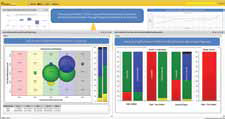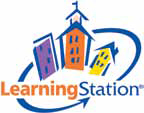BYOD —One Year Later

SchoolCIO checked in with some of the schools and districts we know who’ve allowed students and teachers to bring in their own devices. We were curious to hear how their programs are working out and to see what they’ve learned.
J.D. Ferries-Rowe, CIO Jennifer LaMaster, director of faculty development Brebeuf Jesuit Preparatory School Indianapolis, Ind.
WHAT WERE YOUR GOALS?
Four years ago, after we conducted surveys and focus groups of various faculty members and students, we learned that they wanted to have 24/7 access, the ability to choose their own devices, an open wireless network, cloud storage, open communication tools, and 1:1 computing. We borrowed heavily from the book, Information Power. We wanted students to be able to access tools for learning, evaluate the tools for their learning objective, and use the tools effectively.
DID YOU MEET THOSE GOALS?
Yes. Students are taking more responsibility in technology use and are engaging in “What is my learning objective?” critical thinking. We have roughly 46 devices using about six OSs in the building. Students recognize the difference between a productivity device and a secondary consumer device. They are also learning to weigh the pros and cons of each device as a learning tool. The wireless connections held and we are fully covered, even outside on the athletic fields. Guests also have wireless access. Google Apps for Education domain tops 600 unique users a day… it’s almost as popular as YouTube!
WHAT IMPROVED?
Tools and ideas to transform education. Sign up below.
We have witnessed more thoughtful tech integration in the classroom and it’s driven by students! Students are empowered to use their tools the way they want to support their learning. W hen teachers allow students to drive technology, they are much more focused on their content specialties than on teaching how to insert a picture in PowerPoint. Collaborative work has increased as well. About 20 teachers are using elements of flipped teaching in their courses.
WHAT DIDN’T WORK?
One of our disappointments is the lack of e-textbooks. Some are unavailable because we require the text to work across several platforms. Others are not available at all. The positive side of this is that many of our teachers are making their own Flip videos, readings, and activities available electronically.
DID ANYTHING SURPRISE YOU?
Implementation went surprisingly well. W e spent three years discussing a 1:1 BYOT program, hosting PD for teachers, making Web resources, piloting, and installing a new wireless network. Taking the front time really paid off. In the classroom, the biggest surprise our teachers mention is the amount of student collaboration time. Once one student finds an effective tool, shortcut, method, or research article, he or she willingly shares it.
ANYTHING YOU’D DO DIFFERENTLY?
While we spent a great deal of time on faculty PD, we should have done more intentional PD for students. In the future, we will have summer boot camps or workshops for incoming students to walk them through things.
TOOLS THEY USE
Adobe, Alice, Audacity, BlackBoard Engage LMS, Camstudio, Camtasia, ChromeBooks, Discovery streaming, Dreamweaver, Dropbox, Edmodo, Epson projectors, Flip and HD Video Cameras, GarageBand, Google Apps for Education, iMovie, iWork, Jing, Kindles, Kodak digital cameras, Lenovo tablets and desktops, Microsoft Office Suite, MS OneNote, Rediker Admissions Plus Pro and Administrator’s Plus for SIS, Sketchpad, SMARTBoards, TurningPoint, Twitter, Vernier probes, Visual Basic, YouTube
Scot A. Graden, superintendent Heather Kellstrom, director of instructional technology Saline Area Schools, Mich.
WHAT WERE YOUR GOALS?
We had four goals: (1) maximize student learning by integrating tech-rich experiences into the curriculum to acquire, evaluate, create, and share digital information; (2) help students achieve media and technology literacy while maintaining a safe and ethical online environment; (3) provide an “always-on” digital learning environment for students; and (4) leverage student-owned devices and digital tools to engage, instruct, and extend student learning, and give teachers the opportunity to drive BYOD from the classroom level.
DID YOU MEET THOSE GOALS?
We’ve offered our students a wide range of experiences with their student-owned technology that has engaged and supported curriculum in the classrooms that support BYOD. Our students scored 9% higher on the same end-of- year technology assessment we’ve administered to exiting 8th graders during the past four years. We’ve worked hard to create a technical setup that offers a variety of network wireless options, is easily accessible with zero IT needed at the student level, has performed with an excellent uptime rate to all users, and includes a solid filtering system.
WHAT IMPROVED?
Students suggest ideas for digital assignments and projects as well as ways to better present the curriculum. Students started working more naturally in teams because they had authentic tools and reasons to collaborate. We’ve seen higher quality and quantity of student work. It has become much easier and perhaps more natural for teachers to differentiate classroom assignments or assessments when using digital tools. Teacher-to-student communication has improved as well, thanks to Gmail and Google Apps.
WHAT DIDN’T WORK?
Some teachers still haven’t offered learning experiences that utilize student-owned devices; they are still unsure how it will work in their classrooms. Also, a few students still make bad choices with their personal technology in the school setting and cause a little “fear of the unknown” for some staff members.
DID ANYTHING SURPRISE YOU?
There’s a tremendous amount of upfront work and continual tweaking to fully support the wireless-network core. Students naturally teamed up and sought out students who didn’t have their own technology to bring to class— kind of a “no classmate left behind” scenario. Students have really enjoyed the role of content producers versus passive consumers. We considered offering a “help desk” for students so that classroom teachers weren’t burdened but there was no need.
ANYTHING YOU’D DO DIFFERENTLY?
Build in monthly PD time in which we’d ask teachers to create authentic, technology-rich activities that build on critical thinking, collaboration, and content creation. Select a tech-savvy teacher from each department to provide a train-the-trainer experience. We could also offer a mobile device for each teacher to model safe online practices and help them reach outside of their comfort zone. Offer classes to parents about Internet and cyber safety, best practices, and their role in BYOD.
TOOLS THEY USE
Blogger, Chromebooks, Cisco, Dropbox, Evernote, Flashcards Deluxe, Google Apps for Education, Hapara: Teacher Dashboard for Google Apps, Helios (wireless charging units), iPads/iPad Minis, iPod Touches, Lightspeed Web Filter, Moodle, Nooks, Prezi, Quizlet, Ruckus Wireless, Samsung tablets, Spaaze, VoiceThread, YouTube
Rick Cave, director of technology West Windsor- Plainsboro Regional School District, NJ
WHAT WERE YOUR GOALS?
Our goal was very simple: provide an environment where users could use any device (ours or theirs) to access all of their resources.
DID YOU MEET THOSE GOALS?
We are very close. There are very few devices that do not work in our wireless environment. Also, not all of our resources are online so they cannot be accessed. The good news is that once they are online the users will definitely be able to access them.
WHAT IMPROVED?
The technology has improved and that has increased access and reliability. When we first started playing with this idea five years ago, much of today’s technology did not exist (i.e., access points, controllers, tablets, and ultra-books). The best thing we did was to not tie ourselves to specific technologies. We always looked for solutions that moved us closer to our goal but did not lock us into a long-term commitment to a dying technology.
WHAT DIDN’T WORK?
Making all of these resources available did not have a big effect on what was going on in the classroom. We have learned that traditional teacher-directed instruction does not lend itself to student technology use. We are working with the instructional leadership on changing pedagogy to take advantage of these new resources. This has been harder than building the infrastructure.
DID ANYTHING SURPRISE YOU?
Before we formally announced that BYOD was possible, we had hundreds of users connecting to the network and trying to use their devices in class. The ease and speed of the BYOD devices speaks to the readiness of the students to adopt such a program.
ANYTHING YOU’D DO DIFFERENTLY?
If the teachers and the instruction are not ready for BYOD, then it will not be successful. It is about creating student-centered instruction that allows students to use technology to its fullest. When students are actively involved with the lesson by gathering information, collaborating, and sharing their findings, technology will have the type of impact for which we have been striving.
TOOLS THEY USE
Adobe Creative Suite, Alexandria, BrainPOP, Cisco Access Point, Discovery Education, FollettShelf, Google Drive, Microsoft Office Suite, netTrekker, New York Times online, NoodleBib, Renzulli, SharpSchool, VMWare View
Michael Johnston, director of information technology Farmington Public Schools, Mich.
WHAT WERE YOUR GOALS?
Our initial goal was to provide an opportunity for our students to bring in their own technology based on requests from parents and students. The district had previously not allowed these types of personal technologies to be used in the school and that needed to change. Since we could not yet provide the technology to every individual student, I saw this as a bridge until we could.
DID YOU MEET THOSE GOALS?
Yes. It forced the district to change district policy so that students could bring in and use their own technology. It also helped us to determine how many students would actually take advantage of this new opportunity and how to design a wireless architecture to support it.
WHAT IMPROVED?
Although the district-wide policy has changed, it is still at the teacher’s discretion to allow or not allow the use of technology in the classroom. Schools have come up with their own systems for when and where personal technologies can be used. I feel the students have more flexibility in how they learn and at what pace they learn… it empowers the students!
WHAT DIDN’T WORK?
Some teachers are still hesitant to allow students to use personal technology in the classroom, but that continues to change.
DID ANYTHING SURPRISE YOU?
I never realized how many of our instructional and instructional-support staff would bring in their own personal devices to enhance the learning experience. Everyone in the district is given a high-end desktop, but they like to use their own devices when it best serves the students and themselves.
ANYTHING YOU’D DO DIFFERENTLY?
We are now installing a content filter that pushes down the authority and control to our teachers and eliminates the middle man on requests to open websites that may have been blocked. A CIPA-compliant content filter is still in place, but now the teachers can decide what can be opened for their students. They can open sites for their school, their immediate students, or for a specific grade level.
TOOLS THEY USE
Cisco, Dell netbooks, HP laptops, iPads, Microsoft Office, Windows 7/Windows XP
Debbie Karcher, chief information officer Miami-Dade County Public Schools, Fla.
WHAT WERE YOUR GOALS?
Last year we revamped our AUP to allow for BYOD. We didn’t try to get the teachers ready by offering PD. They could freely choose if they wanted to participate. Because it’s such a big district, it’s hard to force this type of movement. Instead, we’re saying, “There’s a shift in education; teachers are not the only ones delivering information.” We are trying to allow children to very safely use devices in school like they do at home.
DID YOU MEET THOSE GOALS?
We met our goals of providing the framework. You have to go through our network, and we are finding that many of our students do. We provided the infrastructure and WiFi. We added a misuse policy for BYOD to our code of conduct, and we hope that as teachers get comfortable with technology and new models of teaching, BYOD will start in targeted areas and grow from there.
WHAT IMPROVED?
We have a grant to provide Internet access and equipment to students but had to stop providing free Internet due to the high number of illiterate parents who didn’t understand the need for Internet. Also, many of our immigrant families wouldn’t provide the information required to get the free Internet access. We asked for permission to provide free computers instead, and we’re giving out netbooks to 9th graders who receive free or reduced-price lunches and whose parents attend a technology course. Those students are more engaged and their attendance increased.
WHAT DIDN’T WORK?
I think this will be the year when we will be surprised as we add more devices to schools. While we are providing wireless technology to our e-rate-eligible schools, we already put hotspots in high schools for virtual classes. Our students are now connecting with their own devices. We’ll be watching to see what happens.
DID ANYTHING SURPRISE YOU?
Some teachers wanted to see what the students were doing on the devices that they bring in, but there isn’t a program or app that will go across all devices. I’m glad we didn’t find anything because I think they should trust that the students are on target with what they’re supposed to be doing. It’s no different from anything else— it’s just a different way of doing it.
ANYTHING YOU’D DO DIFFERENTLY?
It’s too soon to tell.
TOOLS THEY USE
Apple laptops, Destination Math and Reading, Discovery Education, Edmodo, Edusoft, Gizmos, HP TippingPoint, iPods, Khan Academy, Lenovo laptops, Meru Networks, Microsoft Security Essentials, Mimio, NBC Learn, SharePoint, Pinnacle Grade, Promethean, Reading Plus, SMART, SuccessMaker, Ticket to Read
WHY WE’RE NOT GOING BYOD JUST YET
Nancy Stutsman, director of technology, Monte Cassino School, Tulsa, Oklahoma
We are not actively doing BYOD yet, but have been looking into it extensively. Our 1:1 model with school-purchased laptops is expensive to sustain, and we continue to investigate alternatives. We are not yet convinced to take on the burden of the advance preparation required and are concerned about the increased expenses in areas such as increased bandwidth, more expensive licensing, and specialized software. Although the possibilities are exciting, we are still investigating. We anticipate doing a small pilot program with students from one grade level this spring and will know then.
DEVICE ADVICE
To help families buy the best learning devices, Brebeuf Jesuit Preparatory School leaders posted this information:
Devices must be able to communicate (Google Apps or Blackboard Engage), collaborate (Google Apps, Edmodo), consume (digital textbooks, online research), and create (data computation, word processing, presentations).
Read up on the school’s requirements for student devices: www.brebeuf.org/academics/byot/
Back office business
NEW JERSEY DISTRICT CHOOSES NEW TEACHER EVALUATION SYSTEM
Challenge: New Jersey is reforming its teacher and principal evaluation systems and tying these evaluations to student achievement.

Solution: Last fall, the Nutley Public School District began using Performance Matters’ FASTe, an online platform that lets educators monitor their performance against the criteria for annual evaluations and link to professional development resources. “FASTe enables teachers to reflect on their teaching, easily track what they’re doing, and evaluate how they’re helping students and their families,” says Andrew Levine, director of instructional technology and communication for Nutley Schools.
MICHIGAN DISTRICTS SELECT AN ASSESSMENT SOLUTION
Challenge: Two Michigan school districts—Mecosta-Osceola ISD and Bay-Arenac ISD—needed an assessment product that would help identify student achievement gaps. Solution: The districts chose

Solution: The districts chose LearningStation’s School Insight Assessment Platform, a cloud-based solution. “Creating assessments and distributing scoring and reporting data are efficient and effective with this program,” says Karen Roy, director of general education for Mecosta-Osceola ISD.
TECH IMPROVES READING SKILLS
Challenge: Austin ISD in Texas wanted a product to help students develop reading skills and reduce their schools’ dependence on traditional testing methods.

Solution: Fifteen schools in the district now use Lexia Reading, a scalable, research-based product that recommends direct skill instruction to address gaps for the most at-risk students. “We have 373 students using Lexia Reading and our progress has been excellent,” says Suzann Vera, instructional coach at an Austin ISD middle school.
